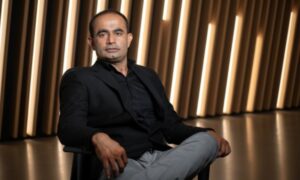One of the most pressing challenges in healthcare today is the fragmented nature of patient data spread across numerous healthcare providers. This fragmentation often leads to inefficiencies and inconsistencies in patient care as healthcare professionals struggle to piece together complete medical histories from various sources.
Without a comprehensive view of a patient’s medical background, physicians may miss critical information, misdiagnose, order redundant testing, and/or prescribe inappropriate treatment plans. This not only compromises patient care but also increases healthcare costs and the use of critical resources.
In response, xCures has emerged as a pioneering solution. By leveraging advanced technology, xCures directly addresses the fragmentation and inefficiencies plaguing patient data management in healthcare, particularly in the field of oncology.
“Our platform is designed not just to gather data, but to transform it into a powerful tool in the fight against cancer,” said Mika Newton, the CEO of xCures, in a recent interview with TechBullion. “By leveraging AI and precise data analytics, we’re empowering both patients and physicians with real-time, actionable insights to ensure that every decision is informed by the most comprehensive and personalized information available,” said Newton.
xCures’ platform is specifically designed to streamline the process of converting unstructured medical data from disparate sources into a structured, analyzable format. With the use of an AI engine and specialized Natural Language Processor tailored for oncology, xCures is able to interpret and organize complex medical data within minutes. This allows physicians, clinical researchers, and patients to pull comprehensive and accurate medical histories that could make the difference between one treatment or another, and ultimately, life or death.
“Our mission is to make every patient’s journey in battling cancer as informed and effective as possible,” said Newton.
According to Newton, xCures’ accessibility is crucial in oncology where treatment decisions often depend on various factors such as previous treatments and responses across multiple specialists. In turn, the platform reduces the risk of misdiagnoses and unnecessary tests, as physicians have a more complete understanding of the patient’s medical background.
Newton also says the company empowers patients and oncologists to make informed decisions about treatments, providing a patient-first approach to ensure treatments are personalized and based on the most current and comprehensive data available. This not only improves the quality of care, says Newton, but also optimizes the use of healthcare resources by avoiding redundant procedures and tests.
“We recognize that the key to advancing cancer treatment lies in our ability to unify, tag, and standardize this disparate data,” said Newton. “Our platform is meticulously designed to collate and transform scattered, unstructured medical records into a coherent, usable format. By doing so, we’re not just streamlining data, we’re unlocking its full potential for both patient care and clinical research.”
On the research side, xCures captures Real World Data (RWD) from patients, which is then transformed into regulatory-grade, clinical data (RRC). “We accelerate research and provide reliable insights to get the right treatment to the right patient at the right time,” said Newton.
This aspect of the platform is particularly valuable for ongoing clinical research and trials by providing researchers access to structured, high-quality data in addition to personalized medicine and more effective cancer treatments.
In terms of next steps for xCures, Newton noted many exciting announcements to come while maintaining a focus on improving patient lives: “Our technology is not just about processing medical data; it’s about creating a bridge between complex information and meaningful treatment options,” said Newton. “Our goal is to ensure that every person facing cancer has access to the most advanced, personalized, and effective treatment paths possible.”



































